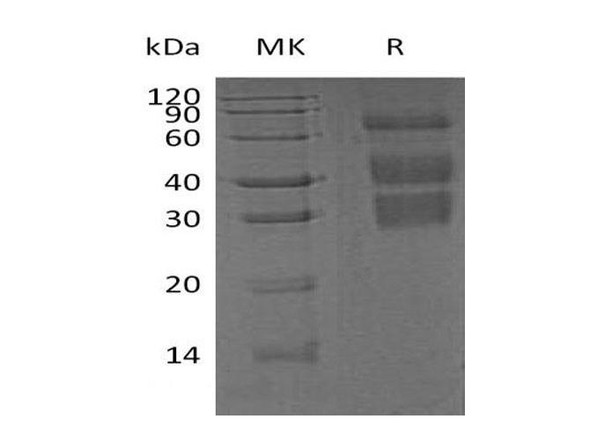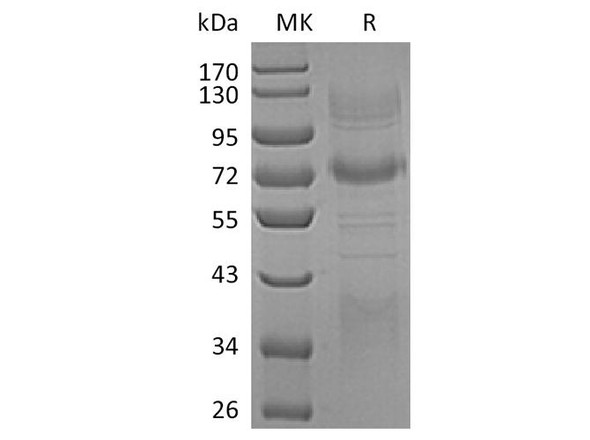Clusterin, also known as Apolipoprotein J, Sulfated Glycoprotein 2 (SGP-2), TRPM-2, and SP-40,40, is a secreted multifunctional protein that was named for its ability to induce cellular clustering. It binds a wide range of molecules and may function as a chaperone of misfolded extracellular proteins. It also participates in the control of cell proliferation, apoptosis, and carcinogenesis. Clusterin is predominantly expressed in adult testis, ovary, adrenal gland, liver, heart, and brain and in many epithelial tissues during embryonic development. Mouse Clusterin is synthesized as a precursor that contains two coiled coil domains, two nuclear localization signals (NLS), and one heparin binding domain. Intracellular cleavages of the precursor remove the signal peptide and generate comparably sized alpha and beta chains which are secreted as an 80 kDa N-glycosylated disulfide-linked heterodimer. Mature mouse Clusterin shares 77% and 93% amino acid sequence identity with an human and rat Clusterin, respectively. High μg/mL concentrations of Clusterin circulate predominantly as a component of high density lipoprotein particles, and these are internalized and degraded through interactions with an LRP-2/Megalin. In human, an alternately spliced 50 kDa isoform of Clusterin (nCLU) lacks the signal peptide and remains intracellular. This molecule is neither glycosylated nor cleaved into alpha and beta chains. In the cytoplasm, nCLU destabilizes the actin cytoskeleton and inhibits NF kappa B activation. Cellular exposure to ionizing radiation promotes the translocation of nCLU to the nucleus where it interacts with an Ku70 and promotes apoptosis. This function contrasts with an the cytoprotective effect of secreted Clusterin. During colon cancer tumor progression there is a downregulation of the intracellular form and an upregulation of the glycosylated secreted form.






